If you have eczema (atopic dermatitis), you are probably familiar with the problems hair removal can cause. Shaving and other hair removal methods can be irritating to eczema-prone skin and lead to flare-ups. So what do you do if you have both sensitive skin and unwanted hair? What’s the best hair removal method for eczema-prone skin? Read on for my best tips about hair removal when you suffer from eczema.
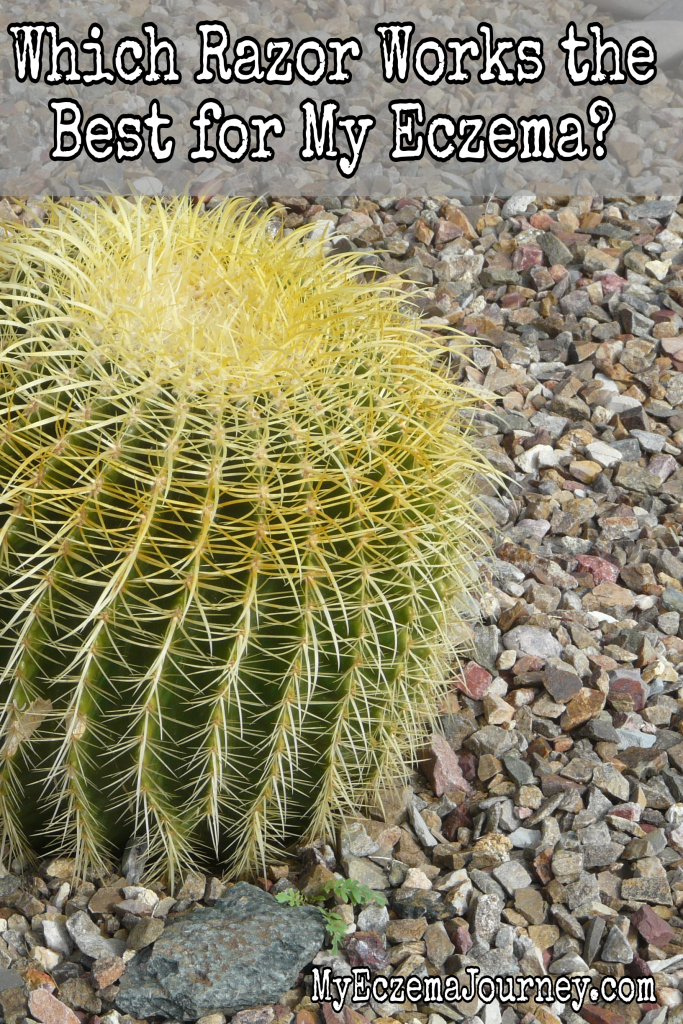
By the way, I did not receive these products for free (although that would have been super cool)! And these are my honest opinions and experiences shared here. However, this article contains affiliate links, which means that I receive a small commission at no extra cost to you if any purchase is made through these links.
Electric razors
My top choice for hair removal on my eczema-prone legs is the Panasonic Close Curves electric razor. I have model WL60 in the mint color, but the purple one is really pretty too.
In my experience, electric razors are more gentle on my eczema-prone skin than disposable razors are. Since the blades don’t scrape against skin the way disposable razors do, they are less likely to cause irritation and trigger an eczema flare-up. I feel like the buzzing of the motor also helps the razor to glide over my skin with less friction.
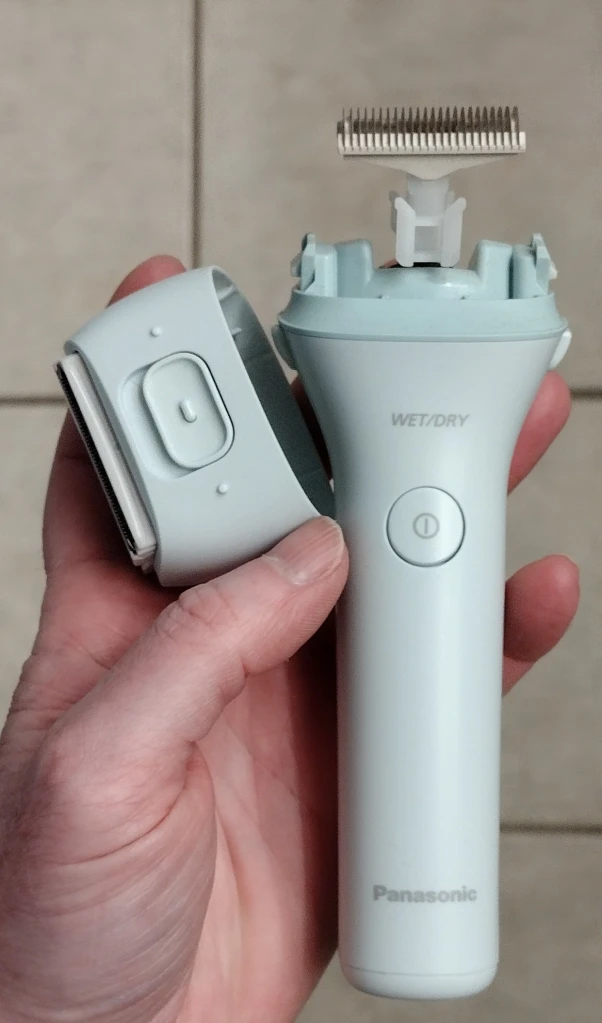
This razor is very gentle on my skin, and can be used wet or dry. There’s a pop-up trimmer, and the head comes off for cleaning. My eczema is currently so well-controlled that I can use the razor dry, which is something I could never do with a disposable razor. (Check out my eczema skincare routine if you want to see the products and methods that have worked best for me!)
Electric razors don’t usually provide a shave that’s as close as a disposable razor would. But since they aren’t scraping as closely or harshly against your skin, they tend to cause less irritation.
The only complaint I have about this razor is that I wish the charger had a spot to attach the cleaning brush that comes with it. I use the cleaning brush a lot more often than I use the travel pouch or owners manual, so I want to keep it handy. However, I have a glue gun and an imagination, so I just added my own! That’s a large-hole bead that I glued onto the top of the charger, and the brush fits inside.
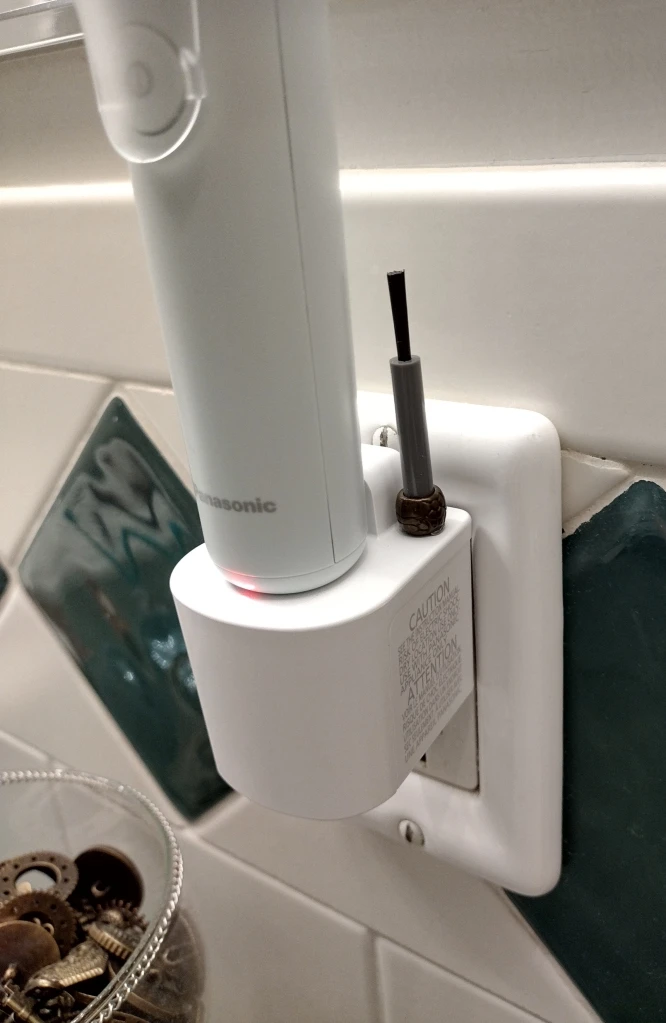
Safety razors (disposable razors)
Disposable razors are convenient and provide a very close shave. But they can also be harsh on delicate skin. Personally, I can still use a disposable razor on my underarms. They are not prone to eczema flares as badly as my legs are. As long as I’m using the best deodorant for my eczema, I don’t have any issues using a disposable razor on my underarms.

My favorite disposable razor I’ve ever used is Gillette’s Venus razor. It seems to stay sharp for ages, and does a really good job of removing hair. It is more irritating to my skin than the Panasonic Close Curves Shaver is, but it’s the best of the disposable razors I’ve tried.
What’s the Best Way to Shave When You Have Eczema?
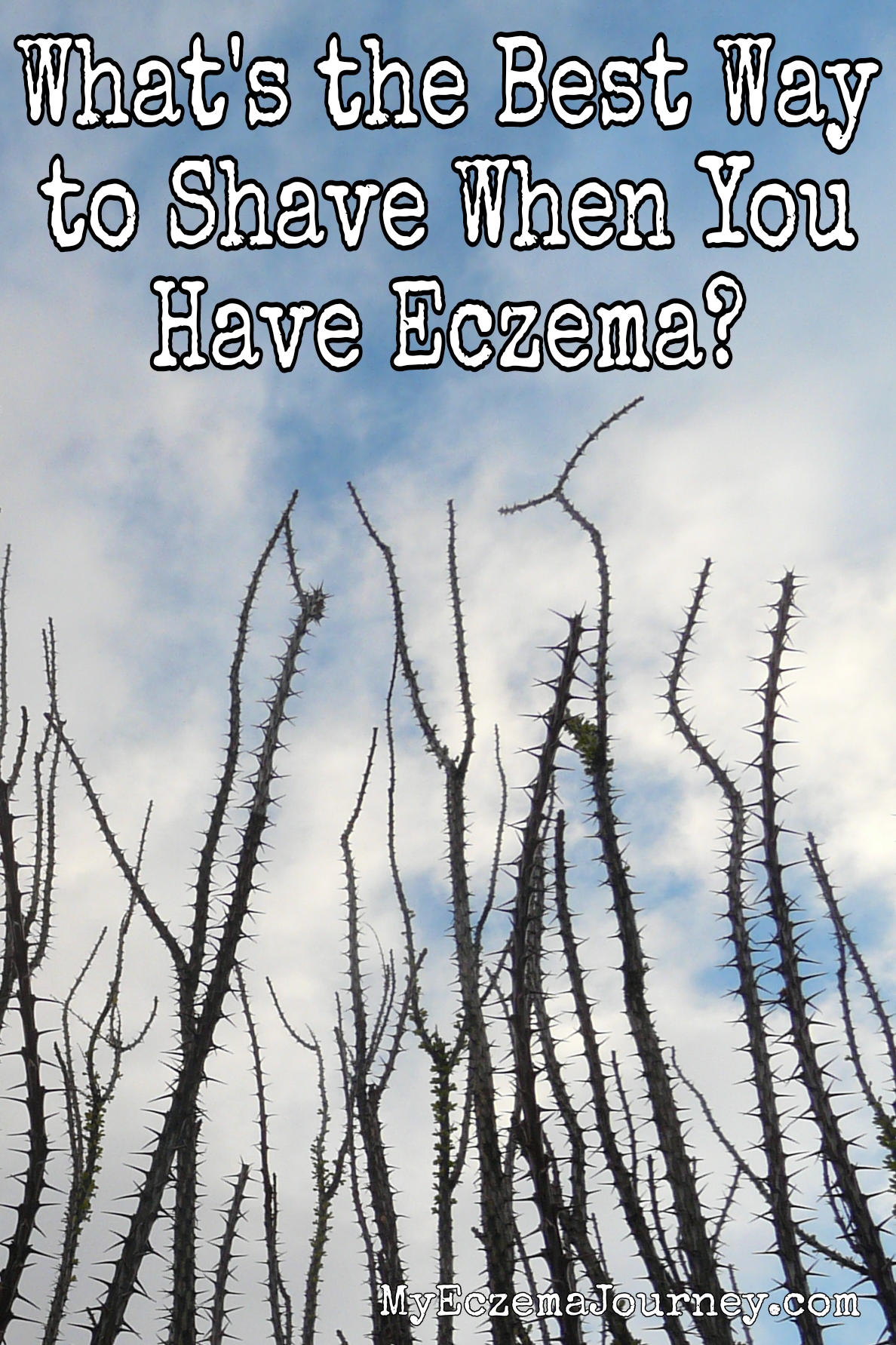
Other hair removal methods may work well for you and your eczema-prone skin. And you should definitely do what works for you. But according to everydayhealth.com, most dermatologists recommend shaving over other hair removal methods for those of us with eczema.
If you are experiencing an active eczema flare, avoid shaving until you get the flare under control. As annoying as an incomplete shave is, using a razor on an active eczema flare will only make matters worse. (If you could use some tips about controlling your eczema, check out the post about my favorite eczema products.)
It can help to get your skin wet ahead of time, in order to soften your hair before it is removed. Use lukewarm water on all areas that you are planning to shave. But soaking your skin for too long can make your skin more prone to irritation. About 10 minutes seems to be a sweet spot for me, but experiment a little to see what works for you.
Keep your razor sharp and clean! The fewer passes you need to make, the less opportunity there is to cause skin irritation. Change the blades out as often as necessary, as burrs or dull blades can cause drag and friction.

Wet shaving is generally less irritating to skin than dry shaving is, and choosing the right shaving cream is essential. Personally, I find a non-foaming shaving lotion more suitable to my skin than a foaming gel or soap. Some foaming products can be a bit drying, which is definitely not what you want for skin that’s already having issues. Be aware of added fragrances or other ingredients that may be irritating to your skin. The cream linked above is fragrance-free and quite gentle.
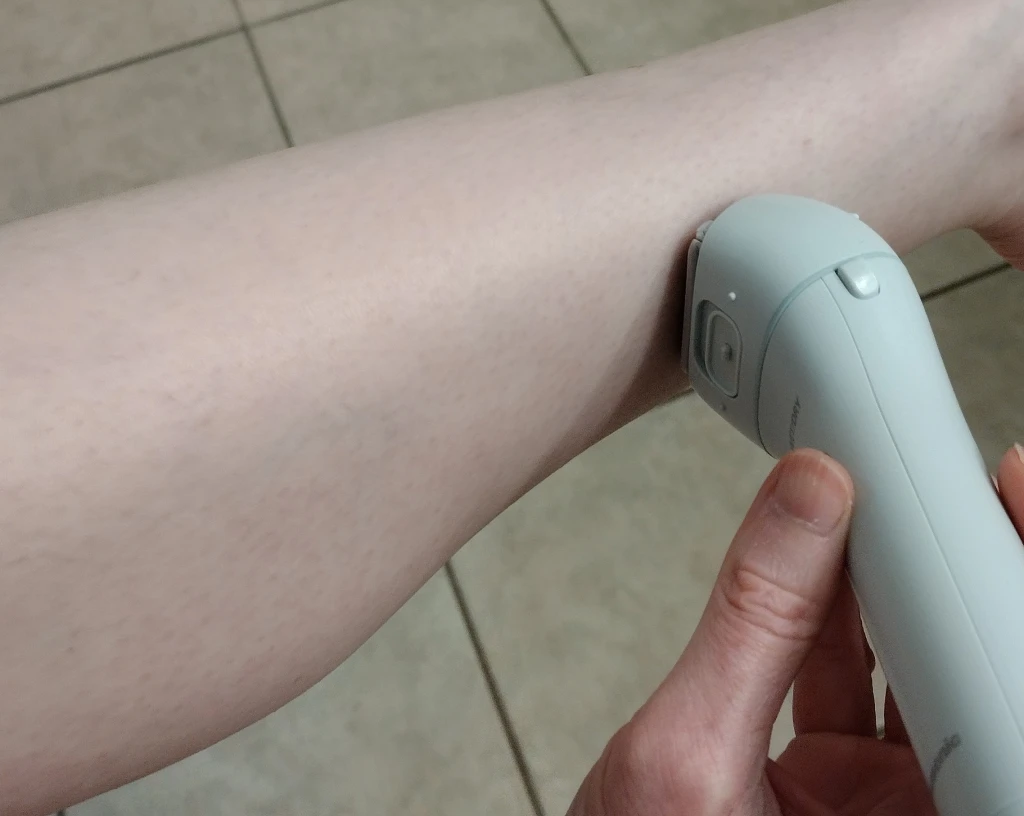
Shave gently, in the direction of your hair growth. Don’t press too hard on the razor, and pivot to follow the curves of your skin as well as possible. In general, a closer shave will mean more skin irritation. Shaving with eczema can be a delicate balance between healthy skin, and ultra-smooth skin.

After you are done shaving, make sure to rinse your skin, pat it dry, and moisturize heavily. I am a huge fan of Amelie Monnier DermaCalm Lotion, and I recommend it as one of my favorite eczema products. The right lotion, applied right away after shaving, can help to smooth over the irritation that hair removal may have caused.
Clean and dry your razor afterward, to set yourself up for success the next time you shave. A dirty or rusty razor will make shaving irritation far worse, and is more likely to cause an infection.
By the way, I personally don’t shave my face, just my legs and underarms. So if you have found another method that works for you, or if you have a tip for removing hair from an eczema-prone face, please drop it in the comments below!
Here’s to smooth and healthy skin!
Jessie